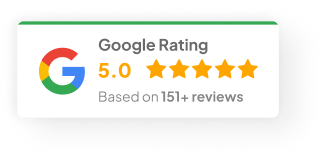03 Apr 25
What is the Real Cost of Having a Slow Loading Website?
Ever clicked on a website that just won’t load fast enough and bailed? Yeah, me too. These days, people expect websites to pop up instantly. Even a slight lag can send visitors packing—and for your business, that means lost chances and frustrated potential customers.
I’ve seen it countless times over my 20 years in web design: a slow site kills conversions, dents your reputation, and leaves Google less impressed than it should be. So let’s dig into why speed matters, what’s often slowing your site down, and some practical ways to fix it before it hurts your bottom line.
Why Nobody Waits for Slow Websites
Think about your own habits. How long do you wait for a page to load? If you’re anything like most people, not long. Studies say 53% of mobile users leave if a site takes longer than 3 seconds. Over half your visitors gone before you even get a chance to show what you’ve got.
It’s not just users who notice. Google ranks fast sites higher—meaning if your website drags, you’ll slip down in search results. Since 75% of people never scroll past page one, slow loading can be a real killer for your online visibility.
What’s Dragging Your Website Down?
Let me put it straight. If your site makes $100k a month, even a one-second delay could cost you $7,000 monthly. That’s a lot of dollars sitting there on the table just because your website’s sluggish.
Here are the usual suspects slowing you down:
1) Huge Images and Videos
Those big, shiny photos and videos are great for looks but can wreck your loading times if they aren’t optimised properly. Think of it like trying to pour a bucket through a straw.
2) Messy, Unoptimised Code
Websites loaded with unnecessary HTML, CSS, or JavaScript act like traffic jams. Clean, lean code helps everything run smoothly and faster. You can prevent this with cleaner, more structured code practices
3) Too Many HTTP Requests
Each image, font, or script your browser has to grab counts as a trip to the server. The more trips, the longer the wait.
4) Slow or Shared Hosting
If you’re on a cheap shared host, your site’s speed can tank during busy periods. Better servers mean better performance.
5) Excessive External Scripts
Third-party widgets, social feeds, ads—they all add to loading time, especially if those external servers are slow or unreliable.
6) No Caching
Without caching, your visitors’ browsers have to reload everything every time. That’s like starting from zero with every visit.
What You’re Really Losing with a Slow Site
It’s not just annoyance. Slow websites hurt your business in a bunch of ways:
-
Lost Sales: A one-second delay can slash conversions by 7%. If you’re selling online, that’s thousands left on the table.
-
More People Bouncing: Visitors leave before they even see your offers. Higher bounce rates mean fewer chances to connect or sell.
-
Poor User Experience: People remember slow sites, and it reflects badly on your brand. They’ll jump to competitors who make things easier.
-
SEO Setbacks: Google rewards speed and smoothness. Lagging behind means fewer eyes on your site.
Why Old-School Fixes Don’t Cut It
You might think squeezing images or caching plugins will solve your problems. Sometimes they help. But often, they’re just a quick band-aid.
-
Tools that crush image size usually wreck the quality, making your site look cheap.
-
Complex websites with heaps of interactive features need more than basic tweaks.
-
These fixes take time, skill, and constant upkeep—things many small businesses just don’t have.
What you really want is a solid, scalable fix that works deep down—optimising media intelligently, tidying up code, and preparing your site to handle growth.
Real-World Tips to Speed Up Your Site
Here’s some practical stuff you can start on today:
-
Optimise images using modern formats like WebP and lazy loading so images load only when needed.
-
Minify your HTML, CSS, and JavaScript to strip out the fluff.
-
Upgrade your hosting to cloud or dedicated servers if you’re still on basic shared hosting.
-
Use caching and CDNs (Content Delivery Networks) to speed up delivery globally.
-
Cut down on unnecessary third-party scripts and widgets.
-
Consider AI-powered tools that optimise images pixel-by-pixel to keep quality but slash size.
-
Enable Gzip compression to shrink files sent to browsers.
-
Remove or defer render-blocking JavaScript that stalls page display.
Look—this stuff works. I once helped a client slash their load time from 9 seconds down to 2 by focusing on these areas. The result? Their conversion rate jumped 35% in just a month. Not magic, just good practice.
What Next?
Slow websites aren’t just frustrating—they’re expensive. You’ve got to act before your competitors speed past you online. If this feels overwhelming, don’t stress. Agencies like Chromatix in Melbourne specialise in fixing these issues and crafting sites that don’t just look good but perform brilliantly too.
Ready to stop losing customers to slow load times? Reach out and see how a faster website can make a real difference.


